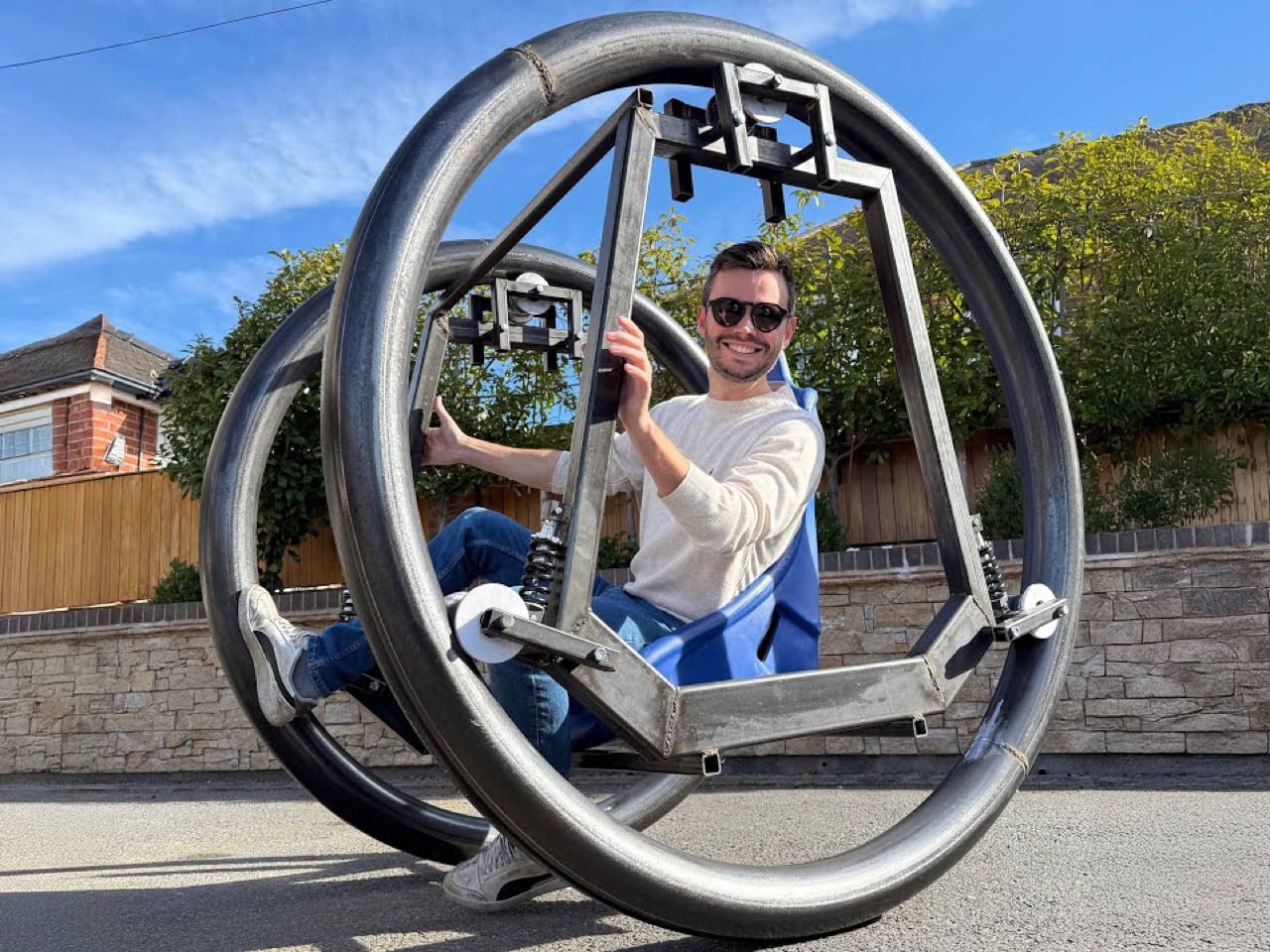
"For the uninitiated, a diwheel (or dicycle, depending on who you ask) consists of two large rings with the rider sitting in a frame between them. Unlike a monowheel, which requires constant balance and gyroscopic forces to stay upright, a diwheel is naturally stable. The outer rings rotate around a stationary inner frame via roller bearings, and the whole thing steers like a tank: differential power to each wheel. It's the kind of vehicle that makes you wonder why we ever settled on boring old bicycles,"
"Barker's approach to the rebuild borders on industrial overkill. The steel tubing for the rings measures 5mm thick and 100mm wide, sourced from a Sheffield metalworker who reported extraordinary difficulty even cutting and rolling the material. Each completed ring weighs 60 kilograms. For context, that's heavier than most complete electric bicycles. The builder openly admits to over-engineering: "Have I gone over the top? Yes. Am I scared it's going to run away with all the inertia? Yes. Is it going to bend? Absolutely not.""
Sam Barker transformed a fragile homebuilt monowheel into a robust diwheel driven by a 60 kilowatt electric motor. A diwheel has two large rings with a stationary inner frame; the outer rings rotate on roller bearings, giving natural stability and tank-like differential steering. Barker used 5mm-thick, 100mm-wide steel tubing for each ring, resulting in rings weighing 60 kilograms apiece. The heavy construction aimed to compensate for imperfect fabrication and welding skills. Ring forming proved difficult, forcing multiple cuts and adjustments after the Sheffield shop failed to roll the metal into perfect circles.
Read at Yanko Design - Modern Industrial Design News
Unable to calculate read time
Collection
[
|
...
]